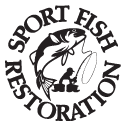CONTACT US:
Florida Fish and Wildlife
Conservation Commission
Fish and Wildlife
Research Institute
100 Eighth Avenue SE
St. Petersburg, Florida 33701
727-896-8626
|
|
|

|
|
Partial funding for this project was obtained through the Federal Aid in Sport Fish Restoration Fund.
|
|
|
|
 |
|
Historically, Lake Worth Lagoon was a freshwater lake with drainage from a swampy area along the western edge.. The barrier island to the east separated Lake Worth from the Atlantic Ocean. In the late 1800s, settlers first arrived on the banks of Lake Worth and immediately began the changes that continue to this day.
In the past, extreme high tides and waves, high lake water levels and storms occasionally cause the formation of temporary inlets. Several early attempts were made to create navigable inlets from the ocean, and in 1877, construction of a stable inlet was achieved. Immediately, the lake began to change to a saltwater lagoon system. During the 1890s, the construction of the Atlantic Intracoastal Waterway from the north end of Lake Worth lagoon to Jupiter Inlet resulted in the increased fresh water discharges to the Lagoon. Also during the decade, developers began filling the wetland edges of the Lagoon, and activity that continued into the 1970s.
By 1915, the Port of Palm Beach created a permanent inlet four feet deep at the north end of Lake Worth Lagoon. In 1925, the inlet was deepened to 16 feet and dredge spoils were deposited in Lake Worth Lagoon, resulting in the creation of Peanut Island. In 1917, the Boynton Inlet (South Lake Worth Inlet) was created in a failed effort to improve tidal circulation and provide flushing to the south end of the Lagoon. The completion of the West Palm Beach spillway in 1925 resulted in significant freshwater inflow to Lake Worth Lagoon. During the early 1930s, the Atlantic Intracoastal Waterway was dredged between Jupiter Inlet and the south end of Lake Worth Lagoon.
Today, Lake Worth Lagoon is connected to the Atlantic Ocean my two permanent inlets. The Lake Worth Inlet is 800 feet wide by 35 feet deep; the South Lake Worth Inlet is 130 feet wide by 6 to 12 feet deep. Atlantic Intracoastal Waterway runs the entire length of the Lagoon. Eight causeways and bridges connect the mainland to the barrier island. Twenty-eight (at the time of this guide's printing) and hundreds of private docks are scattered along the shoreline. Approximately 65% of the shoreline is bulkheaded; only 19% of the shoreline remains mangrove fringed.
Since 1994, there has been heightened awareness and communication among interested parties and local governments concerning the need for water quality improvements and habitat restoration and enhancements in Lake Worth Lagoon. In, August 1998, a team of stakeholders representing local, state, and federal government, businesses, and private citizens approved a final management plan to guide the restoration and enhancement of Lake Worth Lagoon. To date (at the time of this guide's printing), the state of Florida has provided $5.5 million, through the Lake Worth Lagoon Partnership Program, for construction projects to benefit the Lagoon. Beneficial projects include stormwater retrofitting, sewage pump out stations, sewage collection systems for septic tank communities, artificial reefs, and habitat restoration.
|

Lake Worth Lagoon from the International Space Station, NASA
|

|
This Web site was last updated on December, 2013.
|
If you have any questions, comments, or suggestions about this Web site, please e-mail us at boating_guides@MyFWC.com.
Would you like to receive notices of changes to this Web site and the Boating and Angling Guide to Lake Worth Lagoon? If so, please e-mail us and include SUBSCRIBE-LAKE WORTH in the subject line.
|















